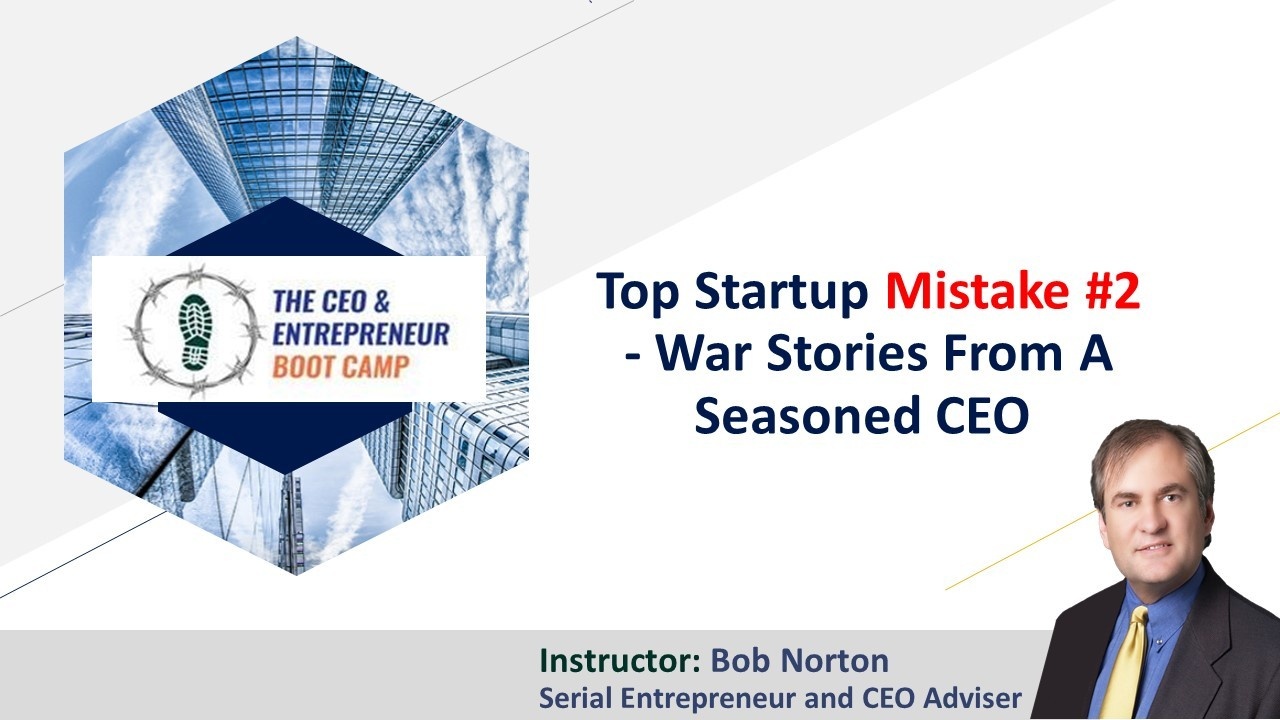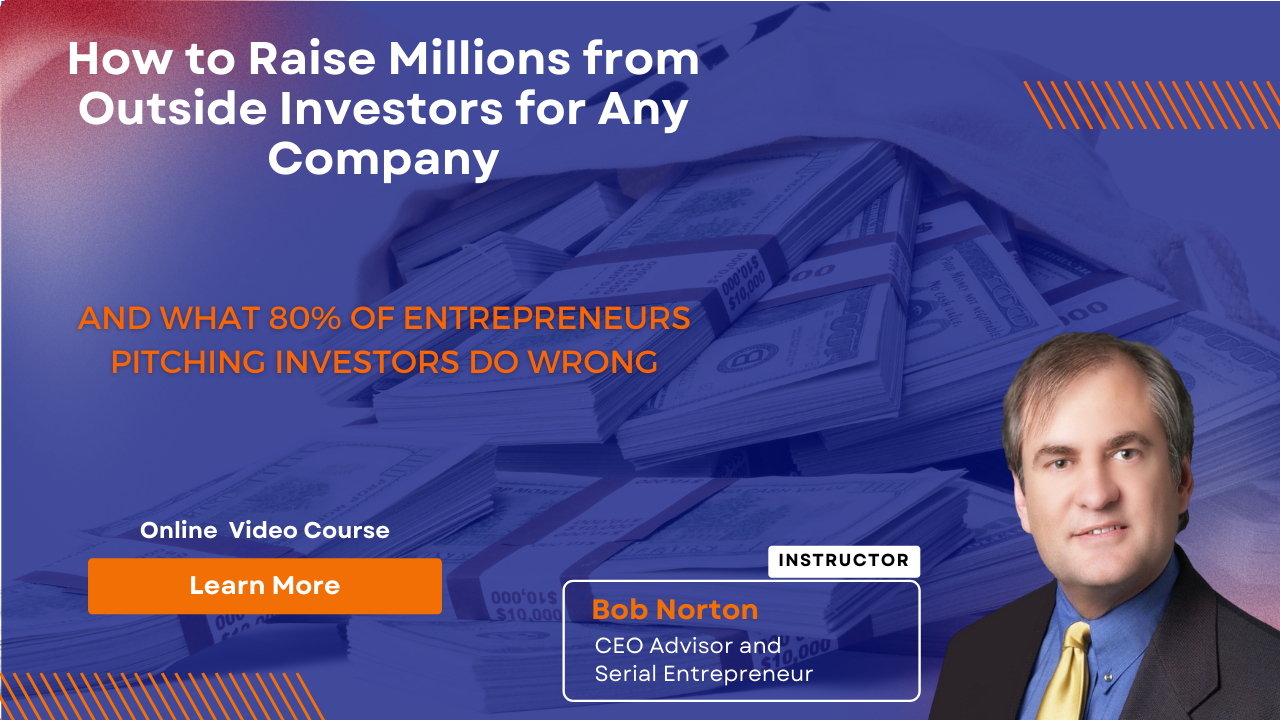Top Startup Mistake #2 - War Stories From A Seasoned CEO

Understanding Capital Expenditures and Their Real Cost
During my first week at a company I had just joined as President, I was asked to approve the purchase of a $250,000 piece of hardware. The operations people, all from larger companies, were desensitized to the cost of capital and its accessibility. They wanted to buy this $250,000 piece of hardware to be ready for the flood of customers "coming soon." The CFO had been convinced by the technical staff that the world would fall apart without this equipment, and we could never serve any customers "correctly." The logic was that they needed months to install it, and we were coming out of beta test soon. So, time was running out! The reality was they wanted the latest and greatest systems and near 0% risk for these non-existent customers and themselves personally, with little weight given to the huge cost.
In fact, the beta test was very limited and probably needed much more time, and the capacity already available I calculated was sufficient to handle many more customers. It would take many months to exceed the capacity we already had. Since it would take 60-120 days to install our product after any sale at new customers’ sites anyway, lead time was sufficient to order this capacity as required only after actual sales were made. (or “after-sales were actually made”)
These very bright people were falling into one of the easiest traps in startups and in life. They were acting on experiences without adjusting their reaction to the specific circumstances at the time. They were also in a "planning mode" as they would be at a former large company where they would avoid all risk because of the potentially high cost of mistakes to a large customer base and their personal careers. Furthermore, they were assuming there was an established distribution channel for the product, when in fact there was yet not even a sales team in place or a single paying customer insight.
Unknown to both the operations staff (or “management team”) and myself during this first week on the job, we would quickly switch from a centralized SaaS model to a decentralized enterprise software model, negating the need for this hardware completely as it would be provided by the customer on-site -- but that's 20-20 hindsight, sort of, so let’s talk about why this made no sense even without this knowledge. This was 2001 and the enterprise market had not yet decided to trust SaaS systems.
The fact is that startups must live with risk every day, manage it aggressively, and must act on a just-in-time basis with any large capital expenditure. A startup is on a rapid learning curve. It must assume a dynamic environment, and hence spend large amounts of money only when absolutely needed now.
To learn more, click here
So how did I manage this request from my management team?
I knew immediately this purchase would never happen, but I wanted to walk the team through the thinking process, so they would understand why. It could not just be an edict from on high, or morale would be hurt and people would begin talking about the CEO’s rash decisions that were endangering the company. I also wanted to begin to train this group on what being in a startup really meant. My main goal was not really making the decision. That was easy. It was training my management staff to make these decisions better in the near future. It was instilling in them some of my experience, so they could become an effective startup management team.
The requested equipment purchase was the latest, greatest, and the most expensive solution they could possibly imagine. So, this was not just about wanting a little more than we needed; it was about buying a battleship when we needed a speedboat. Ultimately, we had three meetings to allow the message and training to be swallowed with time and understanding.
The Meetings
At the first meeting, the team explained why we required the expensive hardware, and I asked for a "cheaper solution". There were lots of diagrams, technical terms, and probably the hope that I would just say okay out of a lack of understanding. The meeting started in the late afternoon, and it was well after dinnertime before it was over. I basically sent them away to look at every possible solution again. I specifically asked them to look at both software and hardware solutions, hinting I was biased towards the former. Furthermore, I knew the software solution already, but did not tell them that. I wanted them to find it.
At the second meeting, they admitted that a solution from another hardware vendor at half the cost would probably do the same thing, but they still wanted the original vendor and configuration because the software with it was thought to be the best. However, "if we couldn't afford it," then they would manage with the $125,000 solution. At this meeting, I began to design a software solution with them that would allow the same level of redundancy they were convinced we needed. I directed them to return with an estimate in man-days to implement this software solution to "delay" the purchase.
At the third meeting, they admitted that the software solution could be implemented, but they did not want to admit how long this might take. I knew by this time that the layering and architecture of their software were excellent. This allowed me, leveraging my years as software architect and CTO, to know for a fact that this would be easy to implement. I suspect they did not want to admit how easy it was going to be because they still wanted this macho hardware, and it would have been an embarrassing comparison.
The last meeting was very short, maybe 10-15 minutes. "We" selected the software solution, which wound up taking less than ONE MAN-DAY to implement, at a total cost of possibly $500.
Ultimately, the way things evolved, this purchase would have been a total waste of money and time in several ways. As it turned out, it was never going to be needed!
MAKING IT REAL FOR THEM
At the end of the day, I think they got it only after I took them through this example of buying a car with THEIR OWN money, as follows:
1) Our cost of capital (VC money) was expected to be about 40% per year.
2) The cost of this hardware would be 50% of what it was today in 12-18 months (Moore's law applied here) when we MIGHT really require it. Therefore, it would cost about 25% as much if we waited till we really required it, not to mention that we never did.
Let's suppose your favourite car costs $30,000 new and will depreciate at a rate of 50% per year. Also, imagine that the only way you could buy it was using a credit card with a 40% annual interest. How old a car of that model would you buy? Doing the maths can be very enlightening, especially when it's your money you are thinking about.
|
|
Capital Cost |
3 Years Interest at 40% per year |
3-year Total Cost |
|
New |
$30,000 |
$18,000 |
$48,000 |
|
1-year-old car |
$15,000 |
$9,000 |
$24,000 |
|
2-year-old car |
$7,500 |
$4,500 |
$12,000 |
I know if this same math applied to automobiles, I would be buying cars that were at least two years old with 6+ years of useful life left in them. This would mean I would pay $3,000 per year when someone buying the same car new would be paying about $16,000 per year over 4 years. That is enough difference to be a competitive advantage, never mind just cost savings when you consider you might need to buy 10, 20, or 30 of these things at a company.
Thankfully, the economics of a new car is not nearly as bad as some computer equipment, but I doubt many people would be driving brand-new cars if they were. Certainly, they would not be buying new $250,000 computer equipment they did not really, really need yet.
It is not just engineers who can be taken in by the "gotta have the latest and greatest" phenomenon. There are lots of very high-paid sales and marketing folks out there convincing everyone that their most expensive solution is the only way to go. Four-thousand-dollar laptops when a $1,200 one will do just fine), three thousand dollar desks (when a $400 one will do fine), and many other "image" products. Startups can rarely afford these, and having them should and do scare investors. Startups must be very frugal. The only job is to get to proof of concept and cheaply and as quickly as possible. Big company thinking kills startups every day.
P & L statements and accounting in larger companies make people think capital expenditures are cheap by amortizing the cost over years and making it look like a small monthly cost on their budget. For rapidly depreciating hardware, or any technology, that is not the case. You often need to pay cash upfront. Or use more expensive venture leasing. Startup CEOs must rethink and expel these reflexes because the cost of capital for startups is generally very high.
Join the course How to Raise Millions from Outside Investors
Bob Norton is a long-time Serial Entrepreneur and CEO with four exits that returned over $1 billion to investors. He has trained, coached and advised over 1,000 CEOs since 2002. And is Founder of The CEO Boot Camp™ and Entrepreneurship University™. Mr. Norton works with companies to triple their chances of success in launching new companies and products. And helps established companies scale faster using the six AirTight Management™ systems. And helps companies successfully raise capital.
What can we help you with today? Scaling, training, consulting, coaching?
Call (619) SCALE06 or (619) 722-5306 9am-6pm CT
Or Schedule a free 30-minute strategy session by clicking here.





